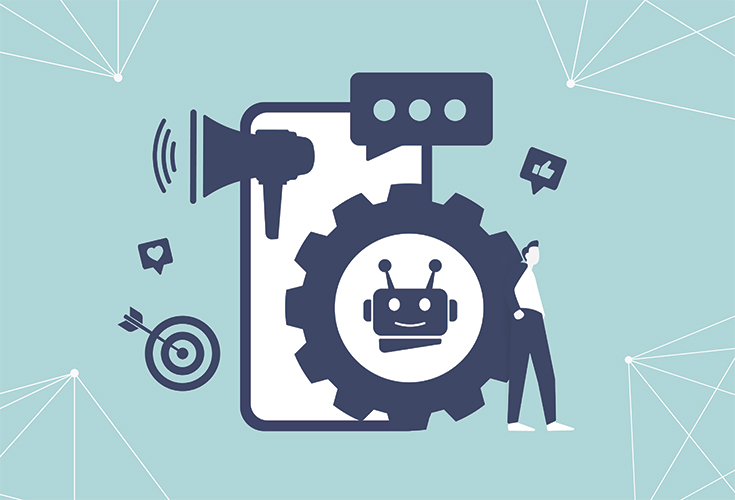When we talk about web accessibility, clients are frequently confused. Web accessibility is an issue that affects everyone, not just those with disabilities. Understanding, using, and preparing for web accessibility can be difficult, and achieving full compliance is best done in stages. Every client must address web accessibility proactively to be most effective, which includes educating oneself about accessibility, generating accessible content, and making that content easily accessible to all online users.
Web accessibility ensures that all users, regardless of ability, condition, or circumstance, may access a website. It focuses on removing barriers to website access and taking an active approach to constructing an utterly accessible website for everyone, including persons with visual, cognitive, physical, and aural challenges.
Four primary Reasons for becoming accessible:
- It is inclusive and allows everyone, including persons with impairments, equal access.
- It improves usability.
- It’s the responsible thing to do.
- It is required by law.
Web Accessibility is inclusive and allows everyone, including persons with impairments, equal access.
The National Center for Education Statistics survey in 2011 found that 11% of undergraduate students reported having a handicap, and current data(opens in new window) discovered that nearly 13% of the U.S. population has a disability.
Most clients have inclusivity as an implicit or explicit part of their mission. Excluding such a large proportion of the population would counter our clients’ mission of being inclusive, collaborative, and responsive institutions.
Web Accessibility improves usability.
When we consider accessibility when designing online material, it improves usability and typically leads to a more intuitive user experience. Online material that satisfies accessibility standards will likely be user-friendly for all. People who do not have disabilities can benefit from accessible design, especially if they are in a restricting position such as:
When watching a video in a noisy or quiet area, read the captions.
Changing the brightness of your screen in a dark or bright room
Reading a presentation transcript to reinforce what you’ve learned
When the mouse is not working, use the keyboard to navigate a website.
It’s the responsible thing to do.
People with impairments can actively participate in our society thanks to accessibility. Most organizations believe to have a certain level of societal duty in addition to being leaders of innovation and growth. This philosophy, as well as our clients’ objective, is supported by accessibility.
It is required by law.
Many federal and state laws mandate organizations to make their electronic and web content accessible to people with impairments. Violations of these standards can result in the loss of funding (for non-profits and art venues that look to federal grants for funding), as some colleges have faced legal action for noncompliance with web accessibility laws. You can find more information regarding the laws behind accessibility Here.
ACCESSIBILITY BENEFITS EVERYONE.
Accessible online material ensures that everyone receives your message. Inclusive messages mean that we can all participate and get the same information. It promotes society by allowing more people to participate actively, sharing their thoughts and perspectives.
ACCESSIBILITY MAKES FINANCIAL SENSE.
Websites and online material that are easily accessible are more likely to attract a larger audience of potential users. For art organizations, this involves broadening their reach into various local regions, which could result in an increase in website views, membership, community goodwill, ticket purchases, and other factors.
WHAT DOES WEB ACCESSIBILITY LOOK LIKE
WCAG is an international standard that explains how to make web content more accessible to people with disabilities. It covers web sites, applications, and other digital content. **
Four Principles of WCAG – Brief Overview
- Perceivable: Web content is made available to the senses – sight, hearing, and/or touch
- Operable: Functionality is available from a keyboard, users have time to read and use content, does not cause seizures or physical reaction, easy to navigate & input modalities beyond keyboard
- Understandable: Content is readable and understandable to the broadest audience possible, including when it is read aloud by text-to-speech.Robust: Content is compatible with different browsers, assistive technologies, and other user agents.
THINGS YOU CAN DO
- Setup comprehensible alt tags for your images – tag your images
- Create all the forms with labels and tags
- Provide descriptions for buttons and navigation
- Create proper page headings and titles that are informative
- Do not have extremely sharp colors or flashing content that may trigger physical problems
- Use an online checker similar to Wave to make sure you’re ok
To get our presentation on accessibility and the arts, please click here.
Dream Warrior Group, a Los Angeles Based web design and digital marketing Company, providing solutions for your online marketing needs. Our expertise includes Search Engine Optimization (SEO), Social Media Posts & Marketing & Google PPC campaigns. Call us now at 818.610.3316 or click here.






